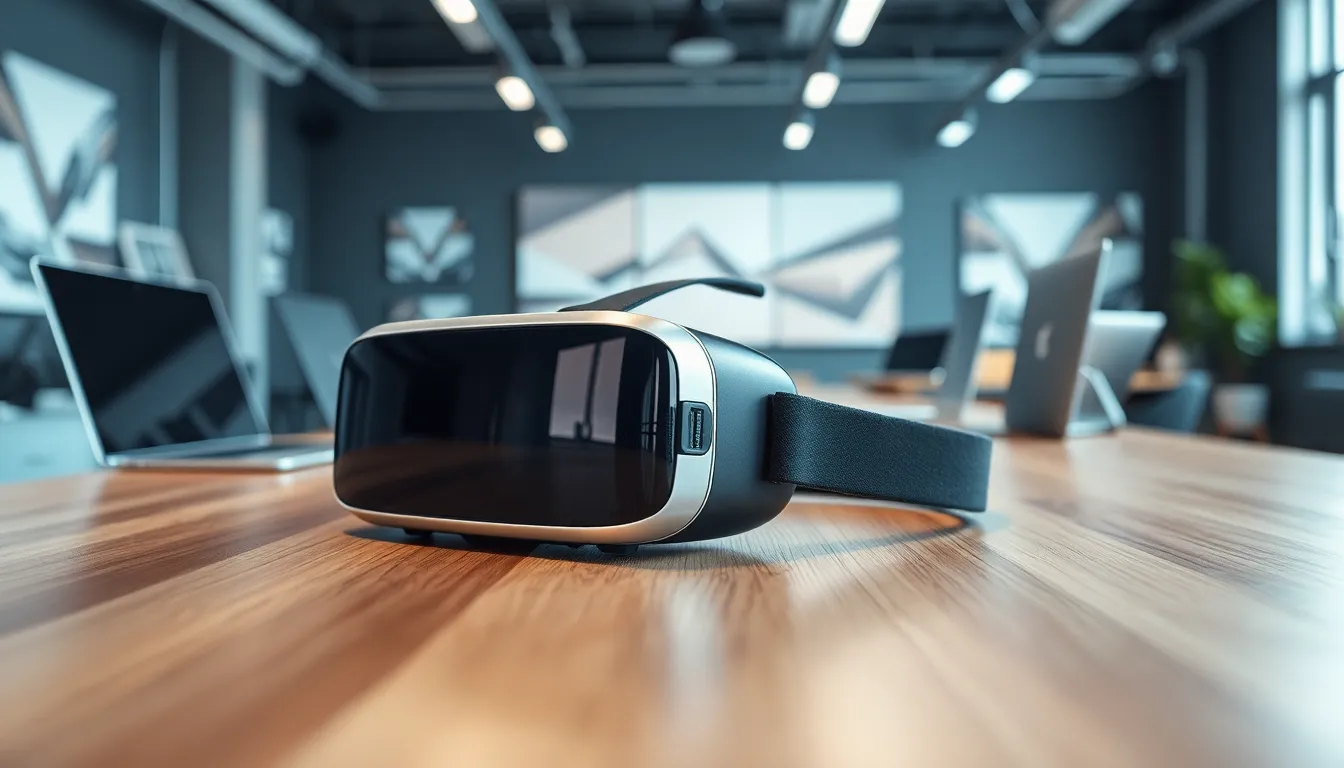Table of Contents
ToggleAugmented reality is the cool kid on the tech block, promising to blend the digital and physical worlds in ways that make even the most jaded gamer sit up and take notice. But before everyone starts donning their AR glasses and chasing virtual Pokémon in the grocery store, it’s crucial to recognize the challenges lurking beneath this shiny surface.
Overview of Augmented Reality Challenges
Challenges in augmented reality (AR) can significantly impact its widespread adoption and effectiveness. Technical limitations pose a primary concern, as high-quality AR experiences demand powerful hardware and software capabilities. Accessibility for users also ranks high on the list, given the variation in device compatibility and performance.
Content creation presents another hurdle, as developing engaging AR applications often requires specialized skills. Businesses may struggle to find talent skilled in AR development, which can delay project timelines. Moreover, limited content libraries can hinder users’ desire to explore diverse applications in AR.
User experience difficulties arise frequently. For instance, poor tracking and latency issues can disrupt immersion, leading to frustration. Users may find that cumbersome hardware affects their willingness to engage fully with AR environments. Ensuring intuitive interfaces becomes crucial for enhancing user interaction with AR technologies.
Privacy and security concerns cannot be overlooked. AR applications often collect large amounts of user data. Failing to safeguard this information can damage user trust and impact app usage. Balancing personalization with privacy protections remains a pressing issue for developers.
Lastly, social acceptance poses an obstacle. Societal perceptions of AR can influence adoption rates. Some individuals might view AR technology as intrusive, while others embrace its potential benefits. Educating the public on AR’s advantages can aid in overcoming these biases.
Technical Limitations

Technical limitations pose significant challenges for the development and deployment of augmented reality. This section outlines the key hardware constraints and software integration issues that affect AR technologies.
Hardware Constraints
Hardware constraints include the need for advanced processing power to run applications smoothly. Many AR experiences require high-performance devices with robust graphics capabilities. Mobile devices often struggle to meet these requirements, leading to decreased performance. Users encounter slow rendering, which negatively impacts immersion. Furthermore, durable and lightweight headsets remain expensive and can limit user adoption. As a result, limited access to these devices affects the overall reach of AR applications. Compounding the issue, battery life becomes a critical factor, as extended usage can drain power quickly, leading to interruptions.
Software Integration Issues
Software integration issues hinder the seamless operation of AR applications. Compatibility across different platforms often remains inconsistent, causing functionality problems. Developers face challenges when attempting to integrate AR with existing software environments. This inconsistency delays project timelines and increases costs. Additionally, updates to operating systems can lead to unexpected bugs, disrupting user experiences. Creating user-friendly interfaces also presents obstacles; developers must balance complexity with accessibility. Such considerations add to the complexity of AR development processes, making it essential for teams to strategize effectively to overcome these hurdles.
User Experience Challenges
User experience challenges significantly impact how individuals interact with augmented reality. These challenges can affect overall satisfaction and long-term engagement.
Usability Concerns
Usability concerns emerge when AR applications lack intuitive designs. Users often struggle with complicated interfaces, leading to frustration instead of enjoyment. Additionally, poorly designed navigation can confuse users, which detracts from immersion. Efficient user experience design focuses on minimizing cognitive load, allowing users to engage naturally with content. Testing applications with real users can reveal specific usability issues, helping developers create streamlined experiences.
Accessibility Issues
Accessibility issues hinder AR technology’s reach and effectiveness. Various devices support diverse AR capabilities, but not everyone has access to high-end hardware. This creates a digital divide, limiting participation in AR experiences. Consideration for different abilities is crucial; AR applications must accommodate mobility impairments, visual impairments, and other disabilities. Offering adjustable settings can enhance usability for a broader audience. Therefore, developers must prioritize inclusivity when designing AR experiences to ensure everyone can benefit.
Privacy and Security Risks
Privacy and security risks play a critical role in the acceptance of augmented reality applications. Developers collect large amounts of user data, which raises concerns about how this information is stored and used.
Data Collection Concerns
Data collection concerns significantly impact users’ trust in AR technology. Users often share personal information, including location data and preferences, leading to vulnerabilities in privacy. Unauthorized access to this data can result in identity theft or misuse. Regulatory compliance, such as adherence to GDPR, mandates clear user consent and transparency around data handling practices. Developers must implement strict data protection measures to safeguard users’ information, ensuring responsible data use while facilitating personalized experiences.
User Anonymity
User anonymity frequently becomes compromised in the world of augmented reality. Users risk exposure through the sharing of identifiable information, such as profiles or behavioral data. Ensuring anonymity helps increase user comfort and willingness to engage with AR applications. Developers can incorporate anonymization techniques, minimizing identifiable data retained. Moreover, establishing clear privacy policies reinforces user confidence, promoting a safe environment for exploration and interaction. By prioritizing user anonymity, AR applications can maintain engagement and foster positive experiences.
Future Directions in Augmented Reality
Developers focus on enhancing hardware capabilities to overcome current limitations. They aim to create lightweight, high-performance devices that support immersive experiences. Advances in cloud computing offer new opportunities for offloading processing tasks, reducing the strain on local devices. Machine learning integration also stands to improve object recognition and environmental mapping, increasing usability in various contexts.
Software frameworks undergo continuous evolution to ensure better cross-platform compatibility. New development tools facilitate easier integration of AR features into existing applications. This shift allows more creators to design engaging AR content, potentially lowering barriers in content creation.
User experience improvements remain crucial. Designing intuitive interfaces encourages broader adoption among various user demographics. Developers concentrate on minimizing latency and improving tracking accuracy, as these factors greatly influence overall satisfaction. Incorporating user feedback during the design process enhances the effectiveness of AR applications.
Accessibility continues to be a primary concern. Accessibility standards become more common as developers strive to include diverse user groups. Creating AR experiences that are inclusive broadens the technology’s reach and fosters wider acceptance.
Privacy measures stay a high priority for AR applications’ long-term success. Adopting robust data protection strategies enhances user confidence. Transparency in data use can strengthen trust and satisfaction among users. Implementing features that ensure user anonymity further promotes a safe environment for exploration.
Social acceptance of AR technology evolves as education efforts grow. Engaging the public through informative campaigns may reduce misconceptions about AR. Cultivating understanding can drive interest and participation, ultimately shaping a positive future for augmented reality.
The journey of augmented reality is filled with both promise and challenges. As developers push the boundaries of technology it’s crucial to address these hurdles for AR to thrive. Technical limitations and user experience issues must be prioritized to ensure seamless interactions.
Moreover the emphasis on privacy and security cannot be overlooked. Establishing trust through transparent data practices will be vital for user acceptance.
As society becomes more familiar with AR’s capabilities ongoing education will play a significant role in shaping perceptions. By tackling these challenges head-on the future of augmented reality can be bright and transformative.







